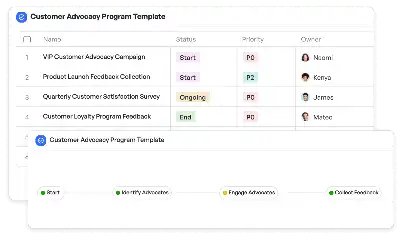Cross-Play Server Migration Protocol
Achieve project success with the Cross-Play Server Migration Protocol today!

What is Cross-Play Server Migration Protocol?
The Cross-Play Server Migration Protocol is a comprehensive framework designed to facilitate seamless server migration for cross-play gaming environments. With the increasing demand for cross-platform gaming, where players on different devices can interact in real-time, the need for robust server migration protocols has become paramount. This protocol ensures that data integrity, player progress, and real-time interactions are maintained during the migration process. For instance, when a gaming company decides to upgrade its servers to support cross-play functionality, this protocol provides a step-by-step guide to ensure minimal downtime and maximum compatibility. By addressing challenges such as data synchronization, latency issues, and platform-specific requirements, the Cross-Play Server Migration Protocol becomes an indispensable tool for game developers and IT teams.
Try this template now
Who is this Cross-Play Server Migration Protocol Template for?
This template is tailored for game developers, IT professionals, and project managers working in the gaming industry. It is particularly beneficial for teams involved in transitioning games to support cross-play functionality. Typical roles include server engineers responsible for backend infrastructure, game designers ensuring gameplay consistency across platforms, and quality assurance teams testing the migrated environment. Additionally, it serves as a valuable resource for project managers overseeing the migration process, ensuring that all stakeholders are aligned and that the project adheres to timelines and quality standards.

Try this template now
Why use this Cross-Play Server Migration Protocol?
The Cross-Play Server Migration Protocol addresses specific challenges faced during server migration for cross-play environments. One major pain point is ensuring data consistency across platforms; this protocol provides tools and guidelines to synchronize player data effectively. Another challenge is minimizing downtime, which can lead to player dissatisfaction. By following the protocol, teams can execute migrations during off-peak hours and use rollback mechanisms to handle unforeseen issues. Furthermore, the protocol includes compatibility checks to ensure that the migrated server supports all targeted platforms, reducing the risk of post-migration issues. By addressing these unique challenges, the Cross-Play Server Migration Protocol ensures a smooth transition, enhancing the gaming experience for players and reducing operational risks for developers.

Try this template now
Get Started with the Cross-Play Server Migration Protocol
Follow these simple steps to get started with Meegle templates:
1. Click 'Get this Free Template Now' to sign up for Meegle.
2. After signing up, you will be redirected to the Cross-Play Server Migration Protocol. Click 'Use this Template' to create a version of this template in your workspace.
3. Customize the workflow and fields of the template to suit your specific needs.
4. Start using the template and experience the full potential of Meegle!
Try this template now
Free forever for teams up to 20!
The world’s #1 visualized project management tool
Powered by the next gen visual workflow engine




